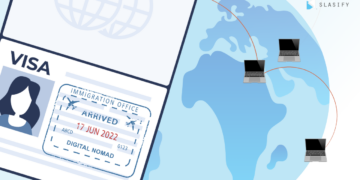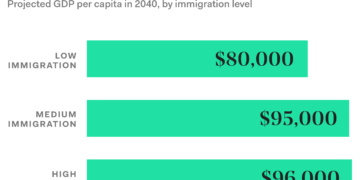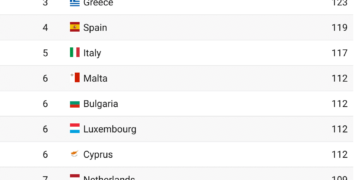[ad_1]
Backlogs, processing delays, and income shortfalls are nothing new at U.S. Citizenship and Immigration Companies (USCIS). The company has lengthy suffered from extreme structural issues that harm individuals who rely on it for work authorization, adjustment of standing, naturalization, and lots of different immigration advantages.
Nevertheless, the influence of the COVID-19 pandemic on company operations has made a nasty scenario a lot worse. Because the 2021 Annual Report of the USCIS Ombudsman describes, the company is now experiencing backlogs of functions and petitions “at file ranges,” in addition to drastically lowered “customer support features.”
The report factors out that, even earlier than the pandemic, USCIS was fighting declining receipts and payment income that was inadequate to cowl working prices. However receipts and payment income dropped even additional when the COVID-19 pandemic triggered a near-total shutdown of the company’s places of work in March 2020.
Many USCIS features rely on face-to-face interactions. The shutdown was devastating for candidates and petitioners whose in-person interviews, biometrics appointments, and oath ceremonies have been out of the blue cancelled.
USCIS subject places of work have been step by step reopened at restricted capability—with lowered providers and fewer employees—beginning in June 2020. All subject places of work have been open by October however have been providing providers at solely about 50% capability at that time. Consequently, backlogs and processing instances grew enormously all through the course of the 12 months.
The report additionally notes that USCIS cancelled roughly 280,000 interviews at first of the pandemic. However the company lacked the employees to reschedule all of those interviews in a well timed trend as a result of, even after reopening, Utility Assist Facilities have been working at 65 or 70% capability at finest.
In keeping with USCIS statistics, roughly 7 million functions and petitions have been pending as of March 31, 2021.
As well as, the report states that a big “frontlog” of functions and petitions developed final 12 months, making the company’s scenario even worse. This occurred for 2 causes. First, candidates and petitioners rushed to file earlier than a proposed payment improve was as a consequence of take impact on October 2 (though the rise was by no means truly applied). Second, after the brand new fiscal 12 months started on October 1, hundreds of candidates filed when their precedence dates turned present. However as a result of USCIS places of work have been nonetheless working at lowered staffing ranges, there weren’t sufficient personnel to course of all the brand new functions and petitions.
The report makes quite a lot of suggestions as to how the company can finest work by its large backlog. At the start, the company can’t rely solely on charges to fund its operations.
Reliance on charges requires the company to venture future receipts and income necessities, which is inherently unpredictable. A continuous mismatch between income projections and precise prices is, in accordance with the report, a main cause backlogs exist within the first place. The report recommends some mixture of payment income and congressionally appropriated funding to allow the company to do its job successfully.
Fortunately, the Biden administration agrees on this level. President Biden’s first funds requires $350 million for USCIS for backlog discount functions. To date, Congress seems to be listening, with the Home Appropriations Committee final week having introduced their plan for a funding invoice which would come with these funds for USCIS. However till that invoice is handed, it should take a very long time for USCIS to dig out from its backlog.
FILED UNDER: immigration backlog, USCIS
[ad_2]
Source link































